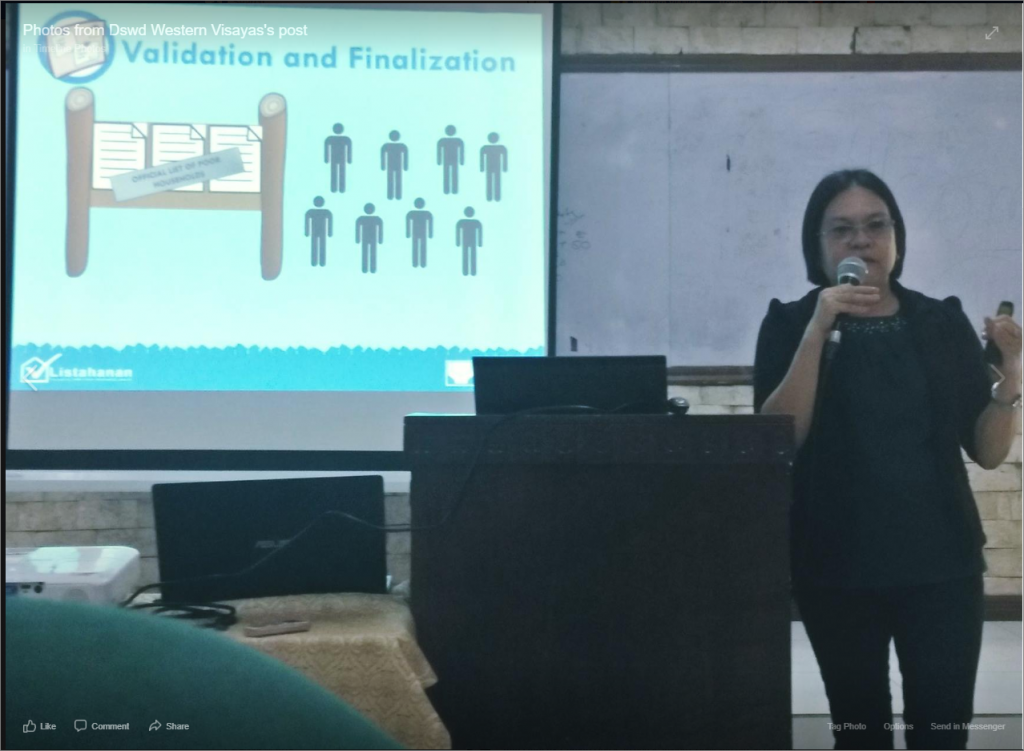The Department of Social Welfare and Development (DSWD) Field Office VI is urging its partners to use the Listahanan database.
DSWD6 Listahanan Regional Field Coordinator, Fe G. Gencianeo recently emphasized the importance of Listahanan Data in targeting beneficiaries for social protection programs and services to the Provincial and City Health Officers of the region.
“Listahanan gives faces to the statistics. It is generated after a house-to-house enumeration even in the far flung areas to reach the poorest of the poor,” Gencianeo stressed during the Provincial and City Service the Provincial and City Service Delivery Network Consultation meeting led by the Department of Health Region VI.
The Listahanan or the National Household Targeting System for Poverty Reduction (NHTS-PR) is an information management system that identifies who and where the poor are in the country. The system makes available to national government agencies and other social protection stakeholders a database of poor families as reference in identifying potential beneficiaries of social protection programs.
It was implemented to establish a targeting system for the government to equitably distribute its resources and services to the poor. With the system, the issue of the leakage (of non-poor being included) and deprivation (poor being excluded as beneficiaries) of social services is addressed.
Gencianeo further explained the objectives of Listahanan and how it identifies the poor families and households.
“We have been using the proxy income indicators in our household assessment forms for the home visits to collect the socio-economic and basic information of the family,” she said.
According to her, there are indicators to estimate the income using the Proxy Means Test tool.
“We conduct interviews through home visits to see the conditions of the households since the proxy indicators for the estimation of the income includes the Family Composition, Housing Condition, Access to Basic Services and Educational Attainment, she stressed.
“After the data are estimated through proxy means test tool, the household income is then compared to the poverty threshold of the province to determine if it is poor or non-poor. The initial list of poor families is posted in visible areas in barangays and municipalities and the local verification committee will act on the complaints and appeals for final validation,” she added.
Also, Gencianeo presented the 2015 Listahanan Statistical data of Poor Senior Citizens, Poor Individuals with Disability, and the source of water supply per province during the said consultation.
“These are just some of the statistics that we have extracted from our Listahanan 2 Data. It can even provide national down to the household-level data including the family roster, however, a data sharing protocol must be followed due to Data Privacy Act of 2012, she finally said. /


